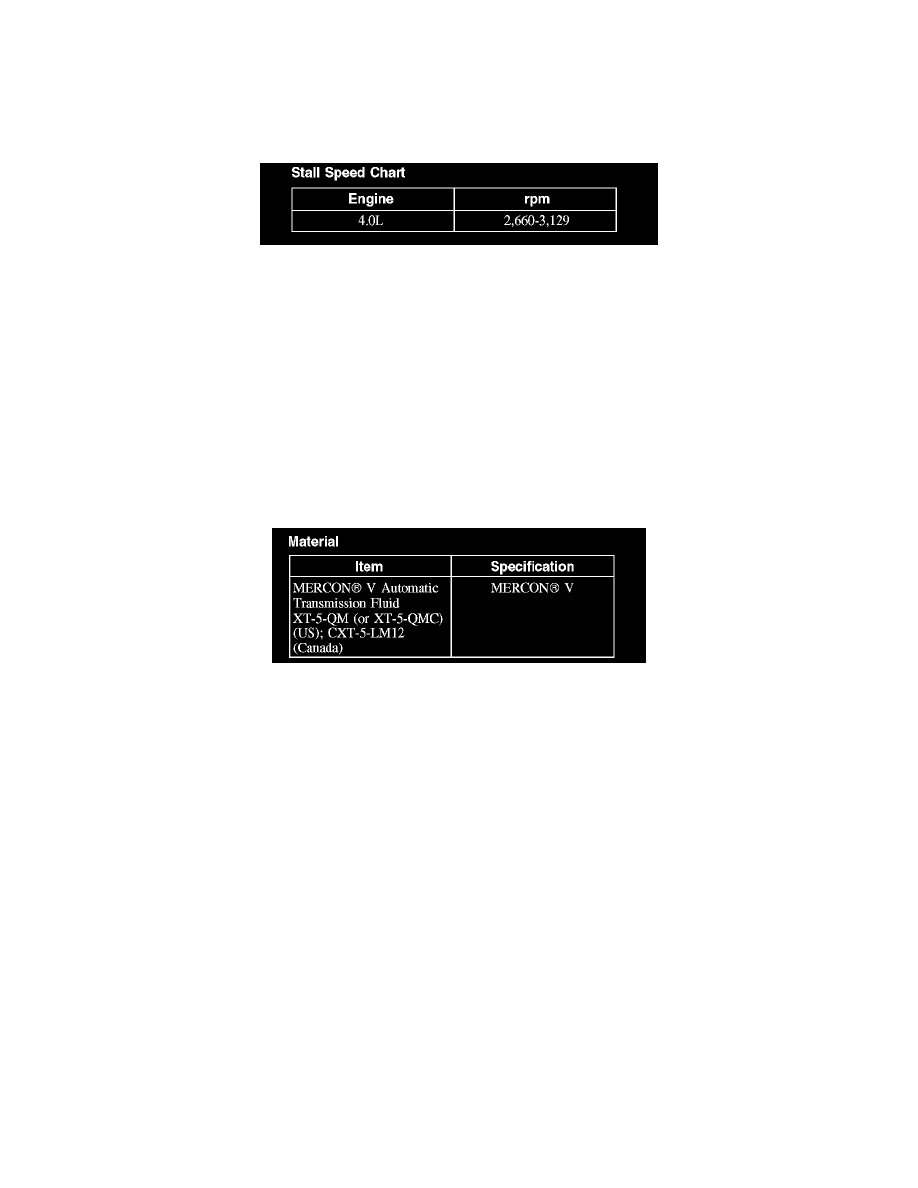Explorer 4WD V8-4.6L (2008)

Torque Converter: Testing and Inspection
5R55S - Automatic Transaxle/Transmission
Stall Speed Chart
Stall Speed Chart
Torque Converter
Torque Converter
1. A new or remanufactured torque converter must be installed if one or more of the following statements is true:
^
A torque converter malfunction has been determined based on complete diagnostic procedures.
^
Converter stud or studs, impeller hub or bushing are damaged.
^
Discoloration (due to overheating).
^
Evidence of transmission assembly or fluid contamination due to the following transmission or converter failure modes:
-
Major metallic failure.
-
Multiple clutches or clutch plate failures.
-
Sufficient component wear which results in metallic contamination.
-
Internal torque converter contamination present.
Torque Converter Contamination Inspection
Torque Converter Contamination Inspection
CAUTION: Do not use water-based cleaners, mineral spirits, brake cleaner or solvents that may contain acetone, xylene or heptane to clean
and/or flush the transmission assembly, transmission components and the torque converter or transmission damage will occur. Use only clean
transmission fluid designated for the transmission/converter being serviced.
NOTE: The torque converter drain plug and seal are not reusable. If equipped, discard the torque converter drain plug and seal, then install a new
torque converter drain plug assembly.
1. If a new or remanufactured torque converter is not being installed, the following steps must be completed.
2. With the torque converter on a bench, pour a small amount of transmission fluid from the torque converter onto an absorbent white tissue or
through a paper filter and examine the transmission fluid.
3. Observe the color and odor of the transmission fluid. The transmission fluid should be red, not brown or black. Odor may indicate an overheating
condition such as clutch disc or band failure.
4. Examine the stain on the tissue for evidence of particles (spec of any kind). Examine the transmission fluid for signs of antifreeze (gum or
varnish). If particles are present in the transmission fluid or there is evidence of engine coolant or water, a new torque converter must be installed.
5. If there are no particles or contamination present, drain the remainder of the transmission fluid from the torque converter.
6. Add 1.9L (2 qt) of clean transmission fluid into the converter and agitate by hand.
7. Thoroughly drain the transmission fluid.
Torque Converter Diagnosis
Torque Converter Diagnosis
Prior to installing a new torque converter, all diagnostic procedures must be followed. This is to prevent the unnecessary installation of good torque
converters. Only after a complete diagnostic evaluation can the decision be made to install a new or remanufactured torque converter.
Begin with the normal diagnostic procedures as follows:
1. Preliminary Inspection.
2. Know and Understand the Customer Concern.
3. Verify the Concern - Carry out the Torque Converter Clutch Operation Test. See: Transmission Control Systems/Testing and
